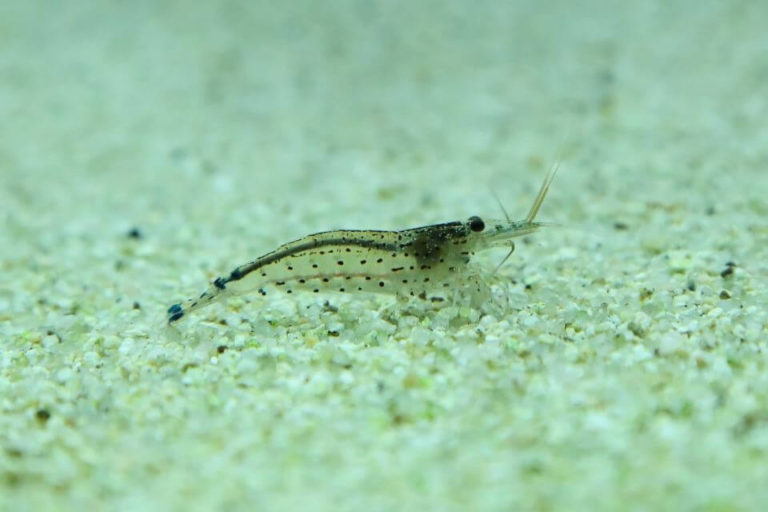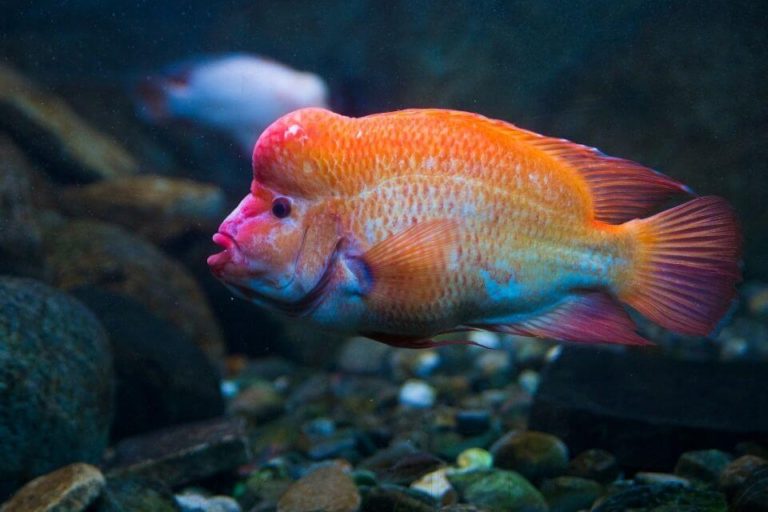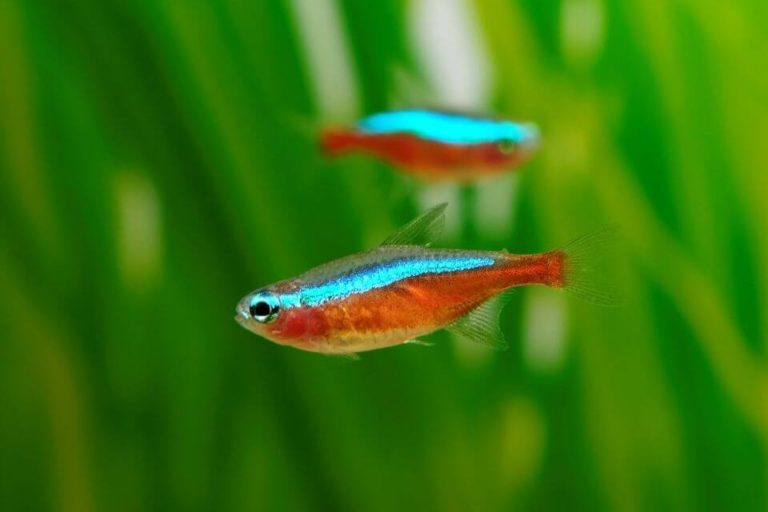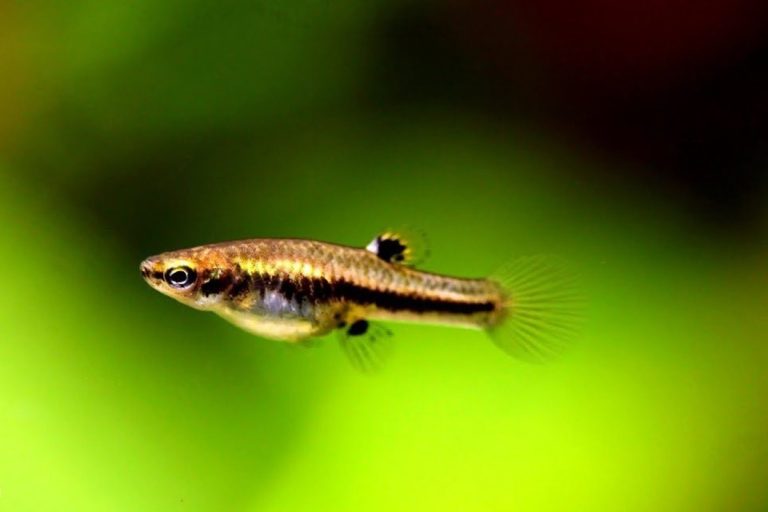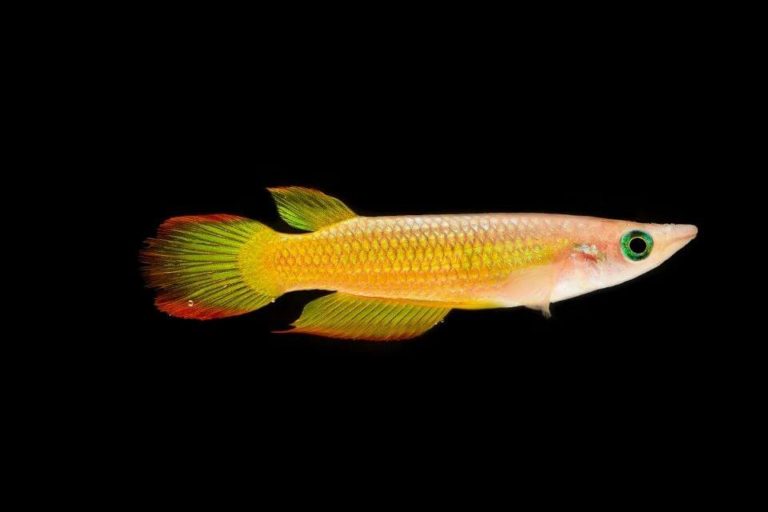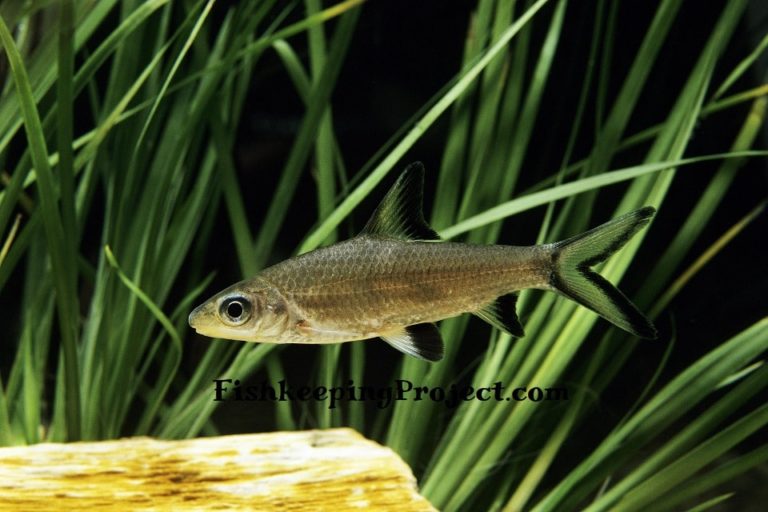Sterbai Cory Care Guide and Species Profile: Size, Diet, Tank Mates
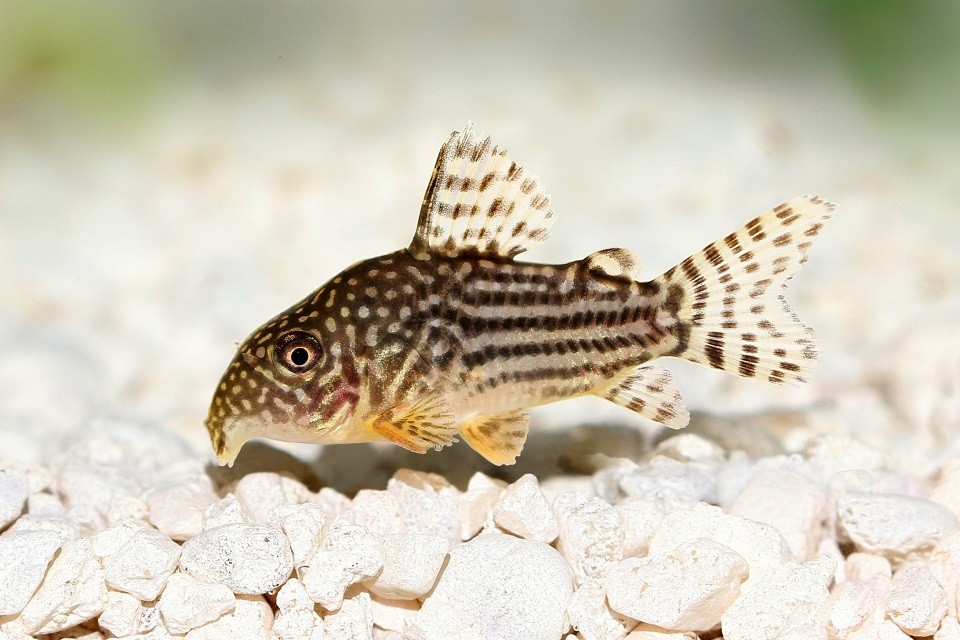
If you are a fish enthusiast, then you have already heard about Sterbai Cory Catfish. This water creature is hardy since it can adapt to various freshwater conditions.
It is also unique and attractive, making it very intriguing to anyone and a great choice to keep in an aquarium in your home to improve its aesthetics.
This beautiful, hardy catfish was first discovered in a river in Brazil in the 1960s. Most people tend to rare these fish species in aquariums in their homes in the modern-day, and Sterba’s Corydoras is a great choice to have.
Do you know how to rare these Cory Catfish in your aquarium? In this Sterbai Cory care guide, you will learn about how to take care of them properly and what the tank setup should be.
Most of your unanswered questions about the caring of Sterbai Catfish are answered here. We are going to give you an insight into this famous catfish.
| Quick Facts: | |
|---|---|
| Common Names : | Sterbai Cory, Corydoras Sterbai, Sterba’s Cory, Sterba’s Corydoras |
| Origin : | Native to Guaporé River in South America |
| Family : | Callichthyidae |
| Scientific Name : | Corydoras sterbai |
| Care Level : | Easy |
| Temperament : | Peaceful |
| Social : | Schooling fish |
| Diet : | Omnivores |
| Size (average) : | Up to 2.5 inches |
| Lifespan : | Up to 15 years |
| Breeding : | Egg layer |
| Minimum Tank Size: | 10 gallons |
| Tank Environment : | Freshwater, Sandy substrate, Floating Plants, Lots of hiding places, Rocks and Driftwood |
| Temperature : | 73°F – 82°F (around 77 °F is the best) |
| Water Hardness : | 3 – 15 dKH |
| Water pH Level : | 6.0 - 7.5 |
Species Overview
Sterbai Cory Catfish also know as Corydoras Sterbai, Sterba’s Cory, or Sterba’s Corydoras. It belongs to the “Callichthyidae” fish family that has over 200 different species and scientifically know as “Corydoras sterbai.”
Additionally, this Catfish species likes spending most of its time at the bottom of the water, and it stays in freshwater surroundings making it a freshwater bottom-dweller.
Sterbai Cory Catfish’s natural habitat is like fast-flowing rivers and streams, and they stick to the bottom of the fast-flowing water column scavenging for food.
These Catfish species were first discovered by Dr. Günther Sterba in 1962 in a South American Guaporé River region. The river is located between Brazil and Bolivia.
Therefore, this catfish species was named after the doctor who discovered it in his honor. The name Cory is from the Greek word Kory, meaning helmet, and Doras is a Greek word for skin.
It features twin rows of armor plating running along its flanks that you can use to identify it quickly.
Further, it has fewer than ten dorsal fin rays, which you can use to differentiate it from other catfish species. The fish has a dark brown head and body, decorated with horizontal white spot rows plus opaque tail and fins with black spots.
The markings in Sterbai Catfish make them beautiful, making them amazing creatures to rare in a freshwater aquarium in your home since they will help improve the aesthetics of your room.
Like other catfish species, Sterbai Cory Catfish has a male and a female with distinguishing physical appearance. The females have a rounder and broader body than the males. These Catfish are shy, and therefore they like typically dark and shaded locations.
Origin and Distribution
Sterbai Cory Catfish native from the South American Guaporé River region somewhere between Brazil and Bolivia. This catfish species is shy, and it dwells at the bottom of the water or places that are dark or shaded.
Getting hold of the wild specimen is quite challenging. However, most specimens of these fish species can be found in a local fish store. They are also available in huge numbers, mostly in Eastern Europe and the Far East.
Therefore, these Catfish species are easily available, and they are affordable. The captive-bred catfish are considered to be hardy and easily adaptable compared to their wild counterparts.
Therefore, you can easily rare this beautiful Sterba’s Corydoras in your aquarium at home. The aquarium must have freshwater without or with low levels of nitrate.
Appearance and Colors
Sterbai Cory Catfish is shy, and it likes dwelling in typically dark or shaded areas of the aquarium during the day and scavenges a lot at night. These catfish species have a stocky profile.
They have twin rows of armor plating on their bodies, which offers them tons of protection against any predators while they are in the wild. Additionally, they have less than ten dorsal fin rays.

They have a dark brown head and body with horizontal rows decorated with white spots. They have black spots on their opaque tail and fins.
Further, just like other Catfish species, Sterba’s Corydoras Catfish have two barbels on the mouth that it uses for rooting through the substrate when scavenging.
Additionally, Sterbai Cory Catfish is predominantly black or brown with white dots adorning their body to create a contrasting pattern that makes them unique and beautiful. Sterba’s Cory Catfish fins have a spotted look with the spots mimicking stripes.
Besides the spots, the fins are all transparent with rays. Sterba’s Cory dorsal fin features sharp rays for more protection against its predators. The females are larger and more bulbous, while the males are slenderer and stouter.
There are pink-eyed albino variations of Sterbai CorydorasCatfish that you can add to your aquarium.
Sterbai Cory Size
These Catfish species are pretty small in size. When they are fully grown, the average Sterbai Cory size can be around 2.5 inches (6 centimeters) long. On rare occasions, some specimens can get up to four inches in length.
Due to Sterbai Cory size, they do not occupy much space, making them an excellent choice for a compact aquarium, even on a small house. Because of Sterbai Cory Catfish’s smaller size and their adaptability, they are so popular.
The females are larger and rounder bodies, while the males are slender and stout.
Sterbai Cory Lifespan
Care and health are among the factors that determine the lifespan of almost every living organism. Just like other living things, Sterbai Cory lifespan depends on proper care and its health.
It is not easy to know how long Sterbai Cory Catfish will live. Multiple factors may determine this fish’s lifespan. The most significant factor is the quality care you provide it with on the aquarium.
Additionally, its living conditions are also necessary. Substandard living conditions may lead to Sterbai Corydoras Catfish succumbing to stress, illness, and even premature death.
The average lifespan of these peaceful freshwater catfish is between 15 to 20 years when you give them proper care, and they stay healthy in an excellent environment.
Keeping Sterbai Cory Catfish happy and healthy in the aquarium will increase the chances of reaching its maximum lifespan of up to even two decades.
Behavior & Temperament
Sterbai Cory Catfish is a peaceful freshwater creature. It is always advisable that you keep them in a group of 5 or more in an aquarium. They are not aggressive at all, and on most occasions, they like to stay out of the way of any impending danger.
In their natural habitat, these freshwater creatures like to stick to their wing. Additionally, Sterbai Cory Catfish are generally shy and introverted. Most of the time, they like hiding in places that they feel more comfortable.
If you want your Catfish to be happy and comfortable in the aquarium in your home, you should put them with aquarium plants. Since they are a bit shy, it is not easy to see them being super playful around the aquarium.
During the day, they mostly lurk in the shadows of the aquarium plants or even under a piece of driftwood. These freshwater creatures are skilled scavengers, and therefore you should not think that they are resting.
They have barbels that they use for guidance, and they shift through the substrate to eat plant detritus, leftover food, or any other food you have placed in the aquarium.
Moreover, if you look at them closely during the day, you see their eyes moving as if they are blinking, but they are looking down the rummaging through the sand.
These peaceful freshwater creatures are facultative air breathers, just like other Corydoras. They can breathe air if necessary, and therefore, they can stay or survive in an ecosystem where oxygen is depleted.
Consequently, you may see them travel up to the water surface in the aquarium for a breath of fresh air. It could be normal behavior for Sterbai Cory Catfish to travel up to the water column to the surface.
However, if the trips up are frequented, they may be an issue. The issues could be the oxygen levels in the water are low, or the water quality has become poor.
Sterbai Cory Care
In order to keep Sterbai Cory Catfish happy and healthy in the aquarium in your home, there are basic needs that you must meet.
These Catfish species are highly adaptable and easy to care for even in the aquarium in your home. Sterbai Cory is a schooling fish species, and therefore you should rare them in a group of 5 or more.
It is recommended to keep them in a group since it is pretty shy when alone. They are also hardy and, in the aquarium, they can easily adapt to multiple water conditions.
However, the water condition in the aquarium should not have high levels of nitrates. In their natural habitat in Brazil, Sterba’s Cory Catfish prefer soft, acidic water.
Additionally, its aquarium should have fine substrates such as sand or gravel to avoid any damage to its delicate barbels.
You should also provide Sterbai Cory Catfish with overhanging rock, large-leaved water plants, arching bogwood, or caves that they can use to hide during the day since they tend to be shy.
– Sterbai Cory Tank Size
These freshwater fish species are smaller in size, and therefore they do not need very large tanks. These freshwater creatures are bottom-dwellers, and they are also shy.
They like scavenging primarily during the night or in dark and shaded areas away from light. Since they are peaceful creatures, Sterbai Cory Catfish can stay with other animals and plants.
Additionally, it is preferred that you rare them in a group of 5 or more. Therefore, the best tank size for raring Sterba’s Cory Catfish should be at least 10 gallons.
It is essential to have enough swimming spaces for your fish to thrive. So we recommend a 25 gallons tank can be good as it will provide them with more ground surface to accommodate their scavenging nature.

– Sterbai Cory Tank Setup
Sterbai Cory Catfish, just like other Corydoras, like rummaging through the substrate looking for scraps of food. Therefore, the tank set up for keeping Sterbai Cory Catfish should have fine and smooth gravel or sand as a ling in the bottom.
You should avoid rough materials since they may harm or damage Sterba’s Cory Catfish barbels.
Additionally, you should add a few dry leaves, such as a handful of Indian Almond leaves that will in infusing some beneficial tannins in the water in the aquarium. If the tank is a bit large, you can use peat moss in a mesh bag.
When doing this, you should monitor the pH levels too. You should also add rocks, caves, driftwood, and plants to provide enough shelter and light cover for the shy Sterbai Corydoras Catfish.
In their natural habitat in Brazil, they like fast-flowing freshwater rivers or streams. Therefore, you should use a water pump or high-powered filter to provide a robust water flow mimicking their natural habitat.
– Water Conditions and Parameters
Sterbai Cory Catfish are naturally bottom dwellers. There natural riverbed habitat water conditions in Brazil are soft and slightly acidic. However, they can adapt and survive in various water conditions and parameters.
If you want Sterbai Cory Catfish to be healthy and to live longer, here are the aquarium water conditions and parameters to ensure that.
- Water Temperature: 73°F – 82°F (around 77 °F is the best)
- Optimal Acidity Levels: 6.0 – 7.5 pH
- Water Hardness: 3 – 15 dKH
– Suitable Plants
- Java Fern: It features very long and relatively broad bright green leaves that will add color to the tank providing cover and privacy for Sterbai Cory Catfish since they are shy.
- Amazon Sword: Broad leaves dwell well when planted in fine gravel substrate, and it will provide Sterbai Cory Catfish with privacy.
- Anubias Nana: Small and dark green rounded leaves that will provide good color to the aquarium.
- Hornwort: Bushy and needle-like branches which will provide cover from above, allow Sterbai Cory Catfish to swim under and through them easily
- Java Moss: Helps in absorbing uneaten food and dead plant matter that Sterbai Corydoras Catfish can forage for.
– Possible Diseases and Prevention
Sterbai Cory Catfish are more resistant to diseases than other catfish. However, they can also get sick. Here are the possible common diseases
Red Blotch Disease:
The disease is caused by similar bacteria species responsible for fin rot and fungus. It is difficult to spot this disease since it appears as small bloody sores on the Sterbai Cory Catfish belly.
You can treat this condition by adding antibacterial treatment to the aquarium. If the disease is not detected early enough, it is usually fatal.
Damaged or missing barbels:
Unsanitary or dirty conditions at the aquariums’ bottom lead to bacterial infections. This can lead to Sterbai Cory Catfish barbels being damaged or drop off altogether.
You can treat this by adding antibacterial treatment to the aquarium. However, the barbels of Sterba’s Cory Catfish will not regrow.
Fin Rot:
Caused by poor water conditions and incorrect diet. The disease causes Sterbai Cory Catfish fins to appear rugged and torn due to bacterial infection.
You can treat this disease by adding antibacterial medication to the aquarium. You can also keep the aquarium clean, filter the water and ensure the filter system is working correctly, and feed Sterbai Cory Catfish the correct food.
Ich:
Also known as White Spot Disease. The disease is caused by Ichthyophthirius parasitic protozoan present in most aquariums, and it is mainly caused by poor water quality and when Sterbai Cory Catfish is stressed.
You can treat this disease by the use of a proprietary treatment found in most pet stores.
Sterbai Cory Diet and Feeding
Sterbai Cory Catfish are scavengers by nature, making them omnivores. In order for Sterba’s Cory Catfish to be healthy and stay longer, they will need a balanced diet despite eating up any food remnant.
It would be best if you got Sterbai Corydoras Catfish, a mixture of live and dried food, for a balanced diet. The foods include catfish pellets, flakes, tablets, artemia, bloodworms, daphnia, and brine shrimp.
It would be best if you fed Sterbai Corydoras Catfish at least once or twice a day. You should also give Sterbai Cory Catfish a good source of protein at least once a week. Since Sterbai Cory Catfish are more active at night, you should feed them just before dusk.
Gender Differences
Differentiate both male and female Sterbai Cory Catfish is not too difficult. The females are larger and have a more rounded belly than the males. The males are a bit slender and stout.
Additionally, the dorsal fin of the male is a bit larger, plus their anal fin is more pointed than the female. Males have more colorful scales also.
Sterbai Cory Breeding
These Catfish species can easily breed in an aquarium or in a special breeding tank. When breeding Sterbai Cory Catfish, you will require a 10 gallons tank, and the temperatures in the tank should be 75° F with a pH of around 6.0.
After that, you will place a bonded pair of Sterbai Corydoras Catfish into the aquarium. In case you are not sure of how they pair; you can use them in a breeding ratio of two males per female.
Add more protein foods to the aquarium when breeding and increase the oxygen flow in the water using an air bladder and perform an average of 50% to 70% water change with cool water. Sterbai Corydoras Catfish has a unique mating ritual that involves them chasing one another a lot and a well-choreographed dance.

The two will then adopt a classic T position with the male at right angles to the female. The female’s head will rest on the male’s midsection. The male will then turn his body and use his pectoral fins to the female’s barbels.
Then, in the spawning process, the male Sterba’s Cory Catfish will release his sperm as its female partner drops 1 to 10 eggs. The female Sterbai Cory Catfish catches the eggs she drops with her pelvic fins.
After fertilization, the female will drop the eggs in the site that she had prepared. The eggs are always sticky, and therefore they will readily adhere to the chosen nesting area. The spawning process will continue for several days, with up to 300 eggs getting laid.
Once spawning is complete and the eggs deposited on the aquarium glass with high water flow, you should remove the Sterbai Corydoras Catfish to prevent them from eating their eggs.
It would be best if you treated the breeding tank using methylene blue, which will help in killing any fungus that may attack the eggs. The laid eggs will take 3 to 5 days to hatch. Allow the babies to eat the egg sac for a few days until they can swim.
Then add some freshly hatched brine shrimp, infusoria, or commercial fry food in the aquarium for them to eat. Bred Sterbai Cory Catfish are always extremely hardy and acclimatized to life in captivity.
Sterbai Cory Tank Mates
Sterbai Cory Catfish are peaceful creatures by nature, making them an ideal choice for creating a biodiverse community. Sterbai Cory Catfish can get along with most fish species in an aquarium due to their docile nature.
It would be best if you kept Sterba’s Cory Catfish in a group of 5 to 6 for them to be more active and confident.
Excellent Sterbai Cory Catfish tank mates are: –
Frequently Asked Questions
How Many Sterbai Corydoras Should Be Kept Together?
The number of Sterbai Corydoras to be kept together depends on the size of the tank. A school of 4 to 6 can be kept together comfortably in an aquarium of 10 t 20 gallons space tank.
Where is Sterbai Cory for Sale?
Sterbai Cory is very adaptive are readily available. Most of Sterbai Cory for sale can be found in the UK, Eastern Europe, and the Far East.
Are Sterbai Cory Catfish Aggressive?
Sterbai Cory Catfish docile, introvert creatures. They are not even remotely aggressive.
How Big Do Sterbai Corydoras Get?
Sterbai Corydoras are generally small in size. Sterbai Corydoras can get to a maximum size of 2.0 to 2.6 inches long, while the females are generally larger and rounder bodies while the males are stout and slender.
How Long Do Sterbai Corydoras Live?
When given proper care, without any stress, illness, and excellent living conditions, Sterbai Corydoras can live for up to 20 years. The lifespan is between 15 to 20 years.
Are Sterbai Cory’s Hardy?
Sterbai Cory is a very robust and easily adaptable freshwater creature. When kept in a healthy environment with correct feeding, this creature can survive. Therefore, Sterbai Cory is hardy.
Why Are My Corydoras Chasing Each Other?
Your Corydoras are chasing each other because they are trying to recruit the little fish in their group, and therefore, they are happy. Additionally, they are trying to mate when they chase each other in the breeding tank.
Final Thoughts
Sterbai Cory Catfish is a magnificent and attractive freshwater fish. This fish is very adaptive and can survive in various freshwater conditions. Because of Sterbai Corydoras Catfish’s beauty and adaptivity, it has become the preferred choice of multiple aquarists.
With the information provided above, you will have a hassle-free experience raring Sterbai Cory Catfish in an aquarium in your home.
The care and maintenance of Sterbai Corydoras Catfish are pretty straightforward, and they have a long lifespan. Sterbai Cory Catfish is a must-have freshwater creature in your aquarium if you are a fish enthusiast and a good aquarist.


